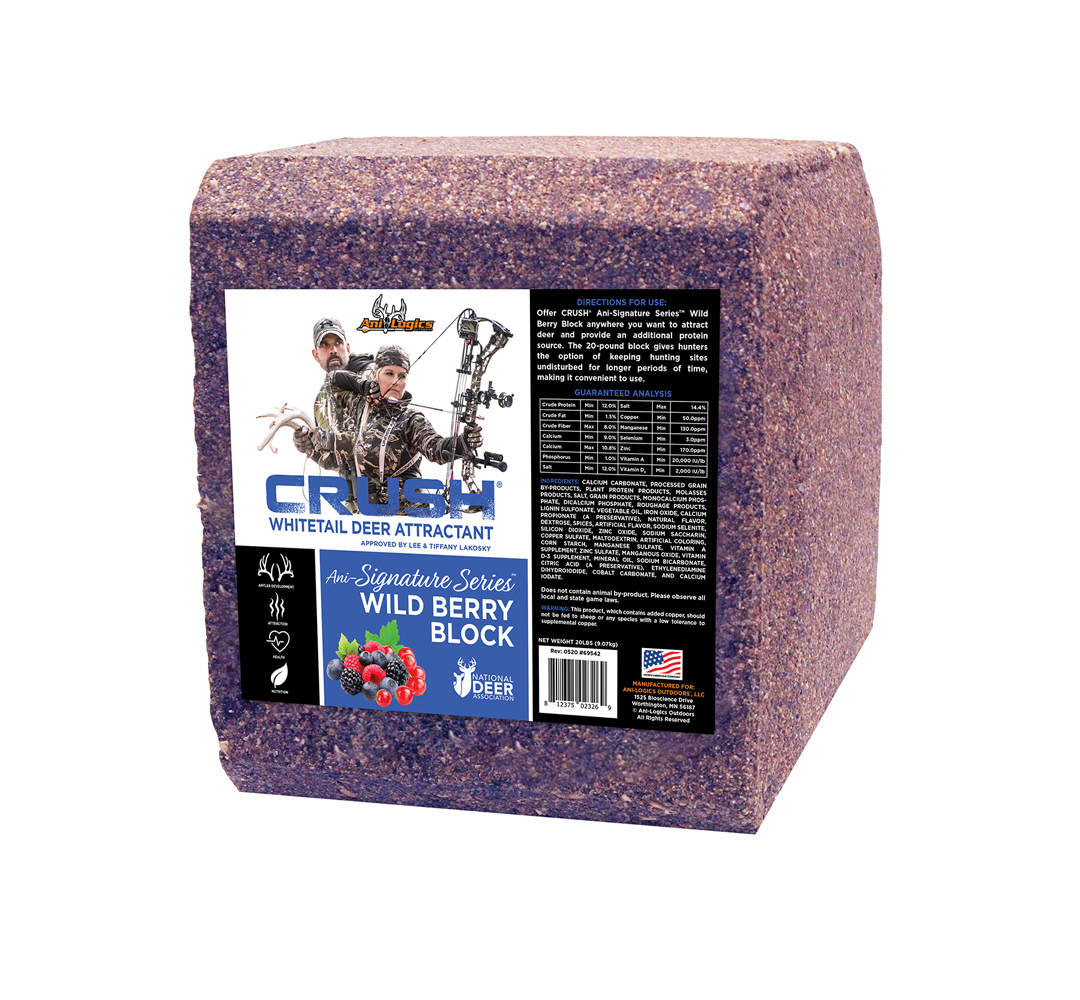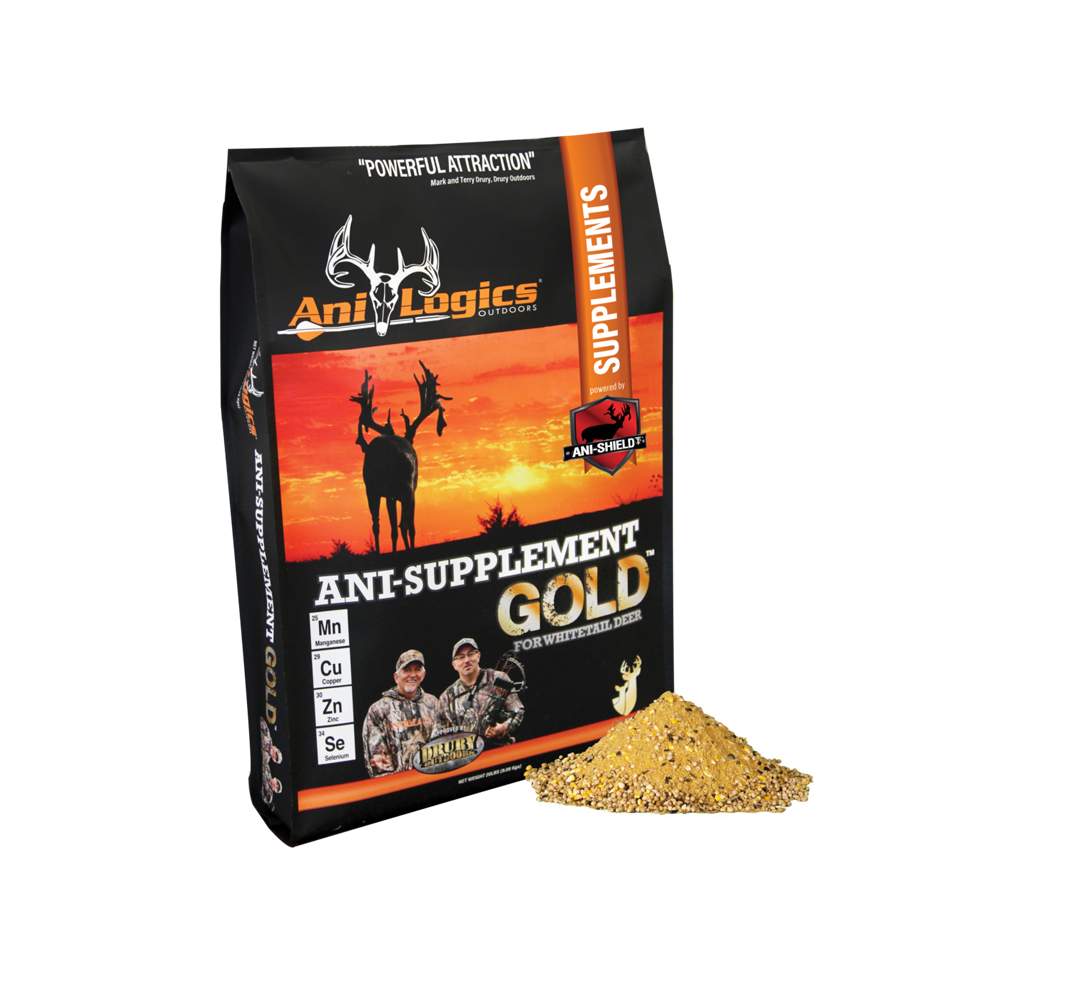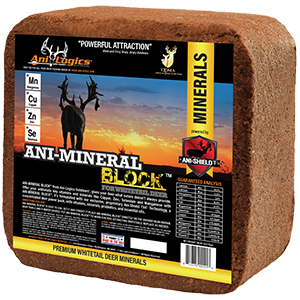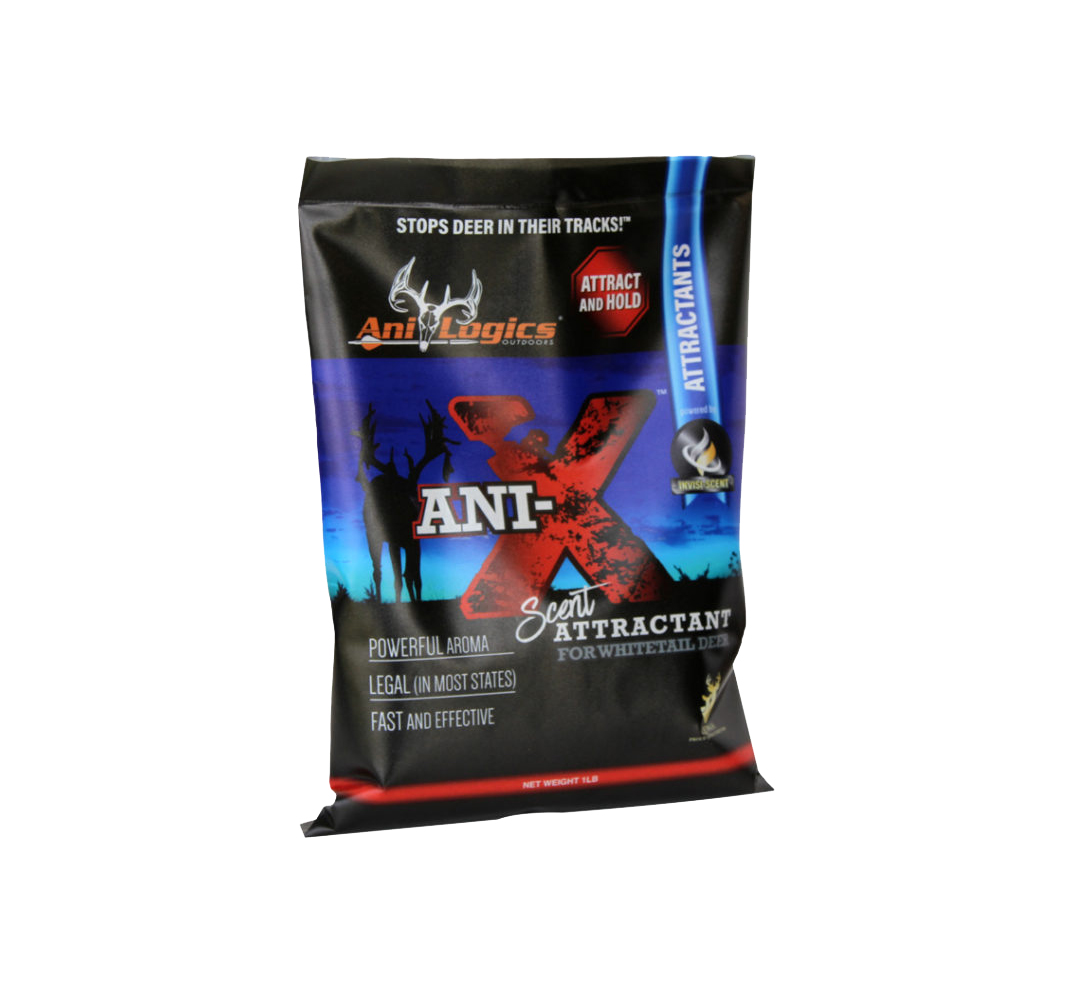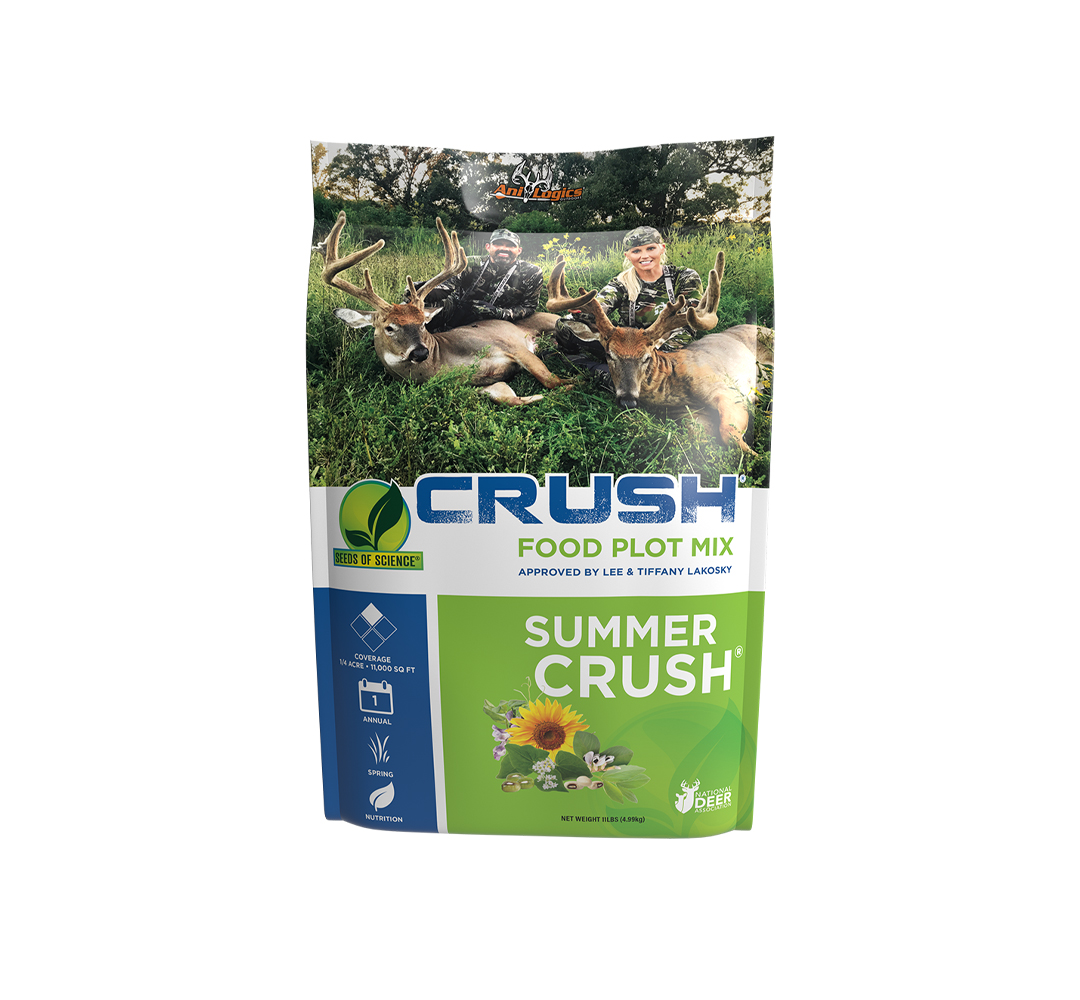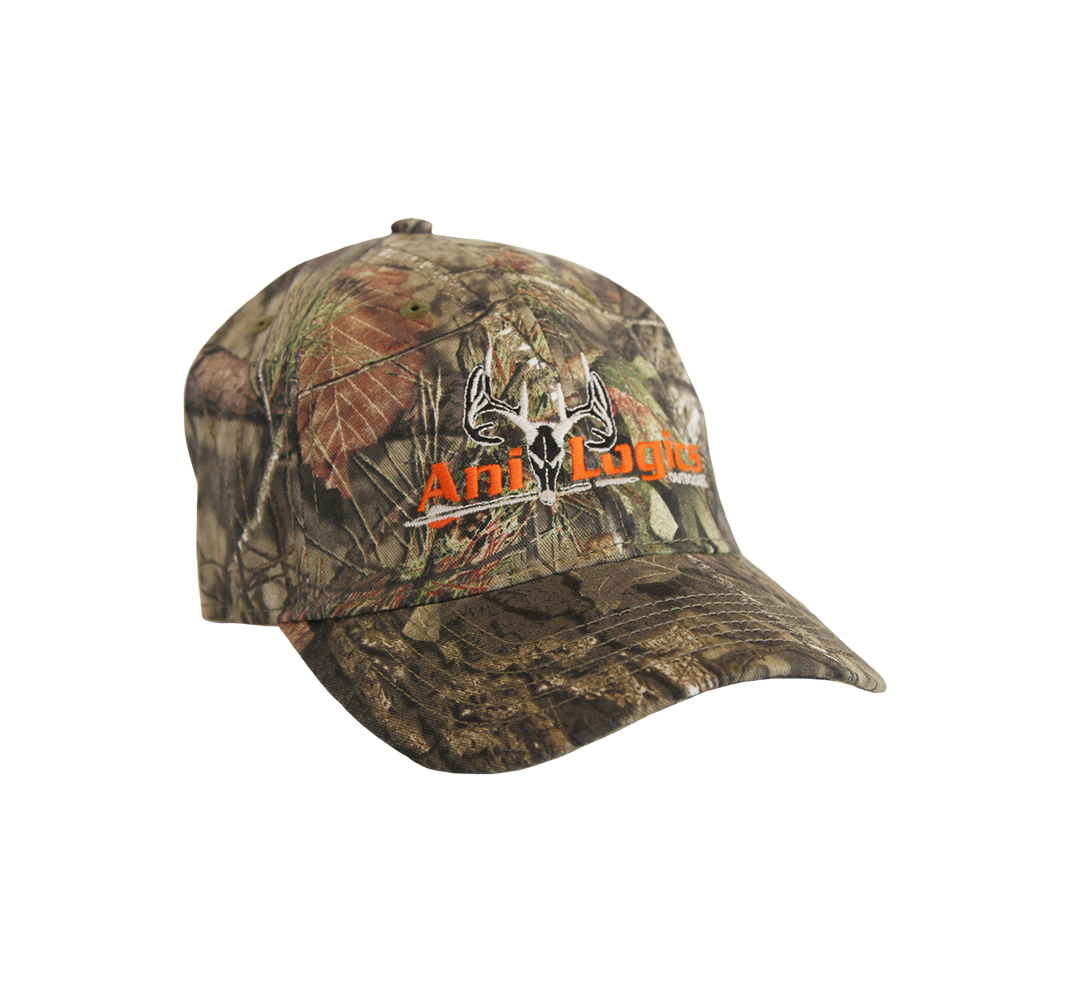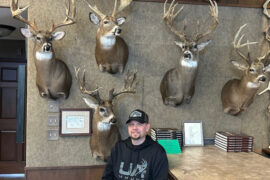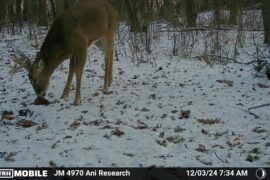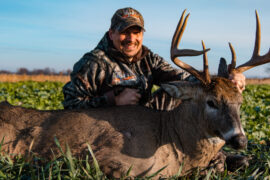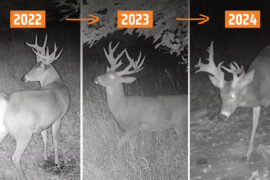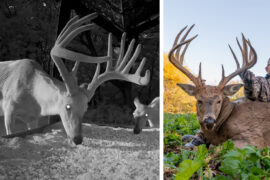The Science of Antler Growth and the Post-Velvet Letdown
I’ve been running trail cameras for 15 plus years, and every year I am disappointed when the bucks I’ve gotten pictures of all summer lose their velvet. Bucks that looked to be absolutely no doubt shooters, suddenly turn into deer I’m on the fence about shooting, and all because they lost a bunch of mass due to the velvet giving me false hope. So how much does a buck lose from velvet to hard antler? Roughly 10%. For example, a buck that scored 160 inches in velvet would score 144 inches in hard antler.
How do I know this? From the summer of 2013 to the spring of 2014, I captured deer for Auburn University’s Deer Lab. We used tranquilizer darts to capture adult males and measured their physical attributes, including gross Boone and Crockett antler score. We started darting each fall in September when most bucks in Alabama are still in velvet. We continued to dart throughout the rest of the fall and winter, and occasionally we captured bucks that were measured in velvet again in hard antler, so we had the opportunity to re-measure in hard antler. Here are a couple examples of the post-velvet letdown:
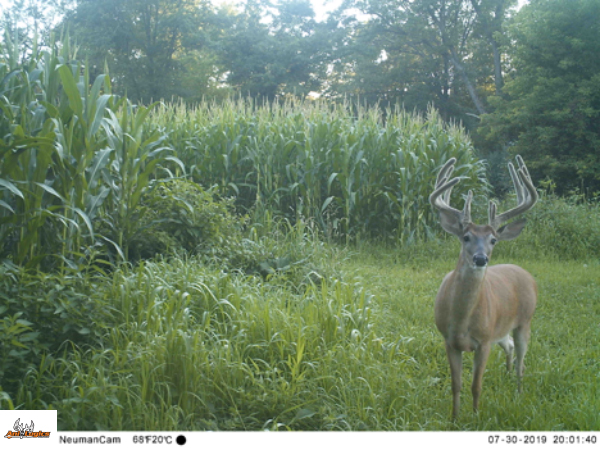 This pic was July 30th when the bucks are in “full bloom” in terms of antler mass. Many hunters look at a pic like this and say, “he’s this big in July, AND he’s got another month to grow!” In reality, antlers do not grow much in August. At this time, they go through the hardening process in which the cartilage portion of the growing antler is resorbed and bone is laid down in its place.
This pic was July 30th when the bucks are in “full bloom” in terms of antler mass. Many hunters look at a pic like this and say, “he’s this big in July, AND he’s got another month to grow!” In reality, antlers do not grow much in August. At this time, they go through the hardening process in which the cartilage portion of the growing antler is resorbed and bone is laid down in its place.
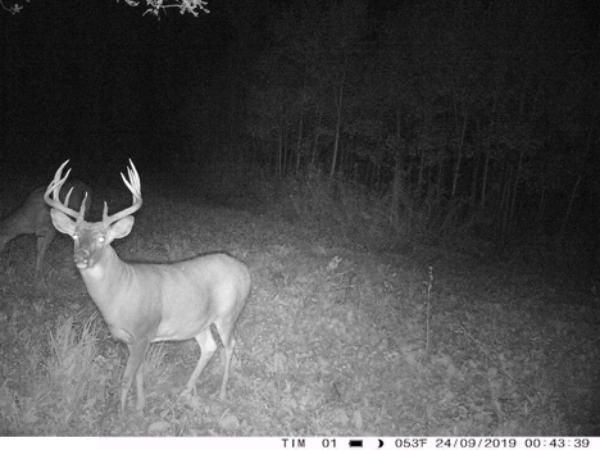 Here is the same buck 2 months later. This buck is 4.5 years old and is still a shooter in my eyes, but he certainly isn’t as impressive as the summer velvet pic led me to believe.
Here is the same buck 2 months later. This buck is 4.5 years old and is still a shooter in my eyes, but he certainly isn’t as impressive as the summer velvet pic led me to believe.
Here is another example of the post-velvet letdown with a 5 1/2 year old buck:
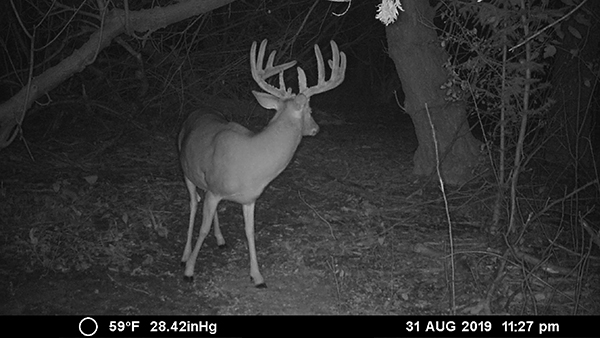
This buck is toward the end of the growing season, but his velvet still gives him the appearance of having great mass.
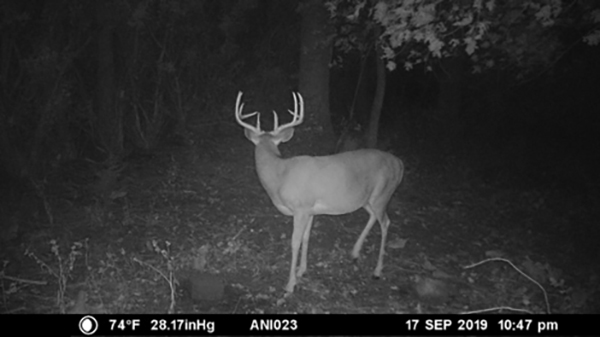
Here is the same buck post-velvet. Don’t get me wrong, he is still a great buck, but not the velvet beast he was 3 weeks ago.
This hard antler shrinkage occurs because the blood supply bringing nutrients to the velvet antlers begins to taper off as the growing cycle concludes. Rapid tissue regeneration such as growing antler requires abundant blood supply to support such high metabolic needs in June/July. In August, those needs have been met and the once flowing stream of blood becomes a trickle. Some people think that hardened antler is dead bone tissue, but in reality, there is a vascular connection from the skull to the spongy core of the antler. This keeps the antler core moist during the fall and is hypothesized to help antlers be more resistant to breakage from fighting. Thickness of the velvet skin actually includes two layers: the epidermis and the dermis. The dermis is covered in tiny hairs which make the antlers look extra massive. The reduction in blood supply at the end of the velvet stage causes these skin cells to die, and depending on how quickly the process happens, velvet can become dried, yet stuck to the antler, or if the buck has the urge to rub while the velvet is still alive, bleeding can occur. We would like to see how different your buck’s look from summer velvet to fall hard-antler. Post them on our social media pages, so you can share our pain when bucks lose velvet mass.
Your Cart
Categories
- Attractants 26
- CWD 1
- Deer Management 60
- EHD 2
- Food Plots 15
- Hunting 85
- Land Management 17
- Minerals 26
- Shed Hunting 3
- Supplements 35
- Turkey Hunting 6
Browse Tags
Products
-
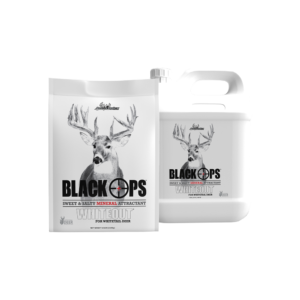 Whiteout Frenzy
$103.90
Whiteout Frenzy
$103.90 -
-
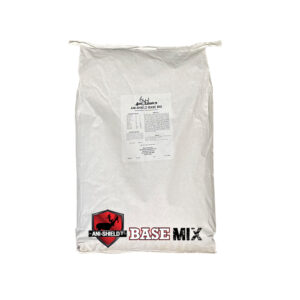 Ani-Shield Base Mix
$59.99
Ani-Shield Base Mix
$59.99 -
-
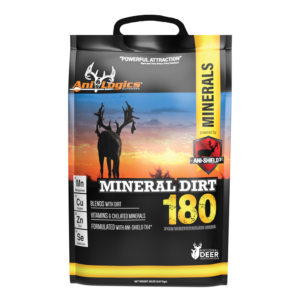 Mineral Dirt 180 - 20lb
$34.99
Mineral Dirt 180 - 20lb
$34.99 -
-
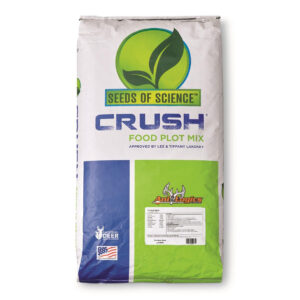 CRUSH Pro Bean Blend
$139.99
CRUSH Pro Bean Blend
$139.99 -

